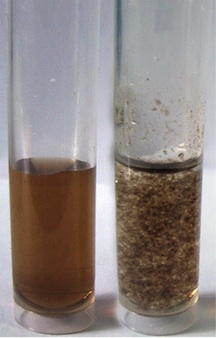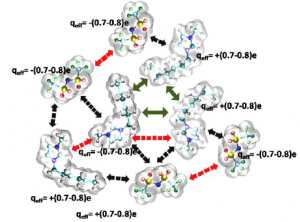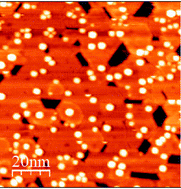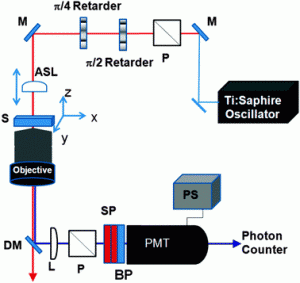The commercial ATTO 465 dye, based on 9-alkylated proflavine, appears ever so simple: a 2,7-diamino-9-alkyl-acridinium fluorophore with a relatively remote carboxylate group. Even so Arden-Jacob and co-workers find that the photophysical behaviour is far from straightforward. This despite the fact that the cousin: ATTO 495 with the 2,7-bis(dialkylamino)-9-alkyl-acridinium dye, is perfectly simple.
ATTO 465 is interesting. As dye it is not spectacular: it absorbs light at roughly a fifth of the best possible and emits around half of the number of photons it absorbs. Nothing unusual here, but the shape of the spectra, the way the dye changes depending on which solvent that surround it, and mechanisms it uses to dissipate energy; that is unusual. And apparently the explanation lies with the hydrogen atoms on the peripheral amino groups?
A dye can be reduced to a group of electrons moving in a box of nanometer dimensions: a small antenna. The macroscopic counter-piece is a radio antenna, which contains a number of electrons that move in the volume of the antenna. If the dye is changes, the interaction between the nano-antenna and light changes. It can be a variation in colour or a difference in the amount of light emitted. ATTO 465 is a box where both the shape and the number of electrons can change. By bonding hydrogen to the amino groups electrons are removed, the bonding also twists the amino groups resulting in a differently shaped box. Unfortunately the ‘twisting’ is not discreet and many different shapes will be present at all times, as long as there are protons (hydrogen atoms) in the solution that surrounds ATTO 465. The result is the complex photophysical behaviour observed and discussed by Arden-Jacob and co-workers.
Much more detail can be found in the full PCCP article:
Ultrafast photoinduced dynamics of the 3,6-diaminoacridinium derivative ATTO 465 in solution
Jutta Arden-Jacob, Karl-Heinz Drexhage, Sergey I. Druzhinin, Maria Ekimova, Oliver Flender, Thomas Lenzer, Kawon Oum and Mirko Scholz
DOI: 10.1039/C2CP43493H
by Dr Thomas Just Sørensen












 In ”Intermolecular exciton coupling and vibronic effects in solid-state circular dichroism: a case study” by Gennaro Pescitelli, Daniele Padula and Fabrizio Santoro, the finer details of the interaction between circularly polarised light and chiral matter is discussed. In this specific case, homochiral microcrystals are investigated experimentally and theoretically. The results presented are impressive, as the theoretical model fits and explains the experimental observation, but why is this study so important? What is this chirality? And which answers are we looking for?
In ”Intermolecular exciton coupling and vibronic effects in solid-state circular dichroism: a case study” by Gennaro Pescitelli, Daniele Padula and Fabrizio Santoro, the finer details of the interaction between circularly polarised light and chiral matter is discussed. In this specific case, homochiral microcrystals are investigated experimentally and theoretically. The results presented are impressive, as the theoretical model fits and explains the experimental observation, but why is this study so important? What is this chirality? And which answers are we looking for?


